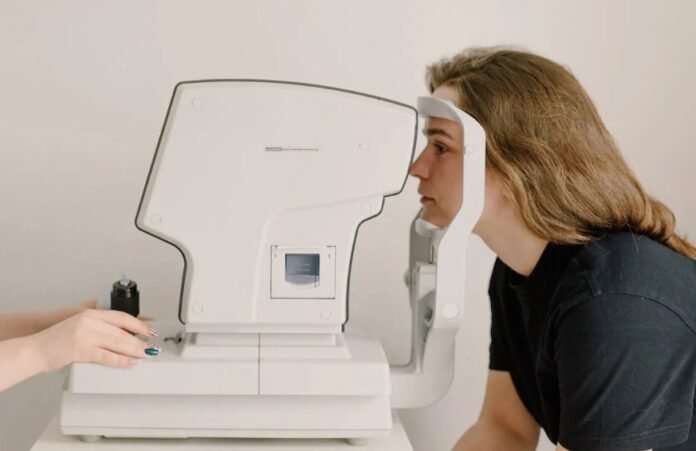Introduction
Presbyopia is a common vision problem that affects adults over the age of 40, caused by the gradual loss of elasticity in the lens of the eye. This leads to difficulty in focusing on nearby objects and can cause headaches and fatigue. This article aims to provide a detailed explanation of presbyopia, its causes, symptoms, diagnosis, and available treatments.
Presbyopia is caused by the natural ageing process of the eye, which leads to a loss of elasticity in the lens of the eye. This makes it more difficult to focus on nearby objects, resulting in blurred vision and difficulty reading small print. While the exact cause of presbyopia is unknown, several factors are believed to contribute to its development, such as age, genetics, and poor nutrition.
The best presbyopia correction method will depend on a patient’s individual needs and preferences. Traditional options such as bifocals and reading glasses are commonly used, however, newer technology offers more advanced options such as progressive lenses and multifocal contacts. Patients need to consult with their eye care provider to determine the best presbyopia correction for their specific situation.
The symptoms of presbyopia include difficulty focusing on nearby objects or small print, frequent eye strain, headaches, and fatigue. Diagnosing presbyopia involves a comprehensive eye exam by an optometrist or ophthalmologist. During the exam, several tests and measurements are conducted to determine if the individual has presbyopia and how far it has progressed.
There are several treatments available for presbyopia, including non-surgical and surgical options. Non-surgical options include corrective lenses such as eyeglasses or contact lenses, which are available in different forms, including single-vision, bifocals, trifocals, and progressive lenses. Contact lenses also come in different varieties, including monovision, multifocal, and mono-focal contacts. Another non-surgical option is the use of reading glasses. However, these options only address the symptoms of presbyopia and do not correct the underlying problem.
Surgical options for presbyopia include refractive surgery, which aims to correct the focusing power of the eye. Refractive surgery can be done using different techniques, including LASIK, PRK, and RLE. LASIK and PRK involve reshaping the cornea to improve near vision, while RLE involves replacing the eye’s natural lens with an artificial lens. Other surgical options include corneal inlays, which are small implants placed in the cornea to improve near vision, and scleral implants, which are placed in the sclera and can improve both near and far vision.
Each presbyopia treatment has its advantages and disadvantages, depending on the individual’s needs, lifestyle, and preferences. Corrective lenses are the most common treatment option, but they require regular maintenance and may not be suitable for all individuals. Refractive surgery is a more permanent solution, but it involves some risks and may not be suitable for individuals with certain eye conditions. Corneal inlays and scleral implants are newer treatment options, and while they are less invasive than refractive surgery, they are still relatively new and may not be covered by insurance.
Conclusion
Presbyopia is a common vision problem caused by the natural ageing process of the eye. It can be managed using non-surgical and surgical treatment options. While each treatment has its pros and cons, it is important to consult with an eye doctor to determine the best treatment for individual needs. Proper management of presbyopia can improve quality of life, allowing individuals to continue to perform daily activities with ease.

